Comma usage can be tricky, and one question that pops up repeatedly is: When to put a comma beforebut? This guide will help you understand how to use commas before and after the conjunction but. We’ll also share a few other tricks of the trade to make using commas easier.
Main Comma Before But Takeaways:
- You need to put a comma beforebut if but connects two independent clauses.
- Independent clauses can stand alone as a sentence. They must express a complete thought.
- A dependent clause doesn’t express a complete thought, so it cannot stand alone as a sentence.
- A comma before but isn’t necessary if both independent clauses are simple and closely related.
- When the but links dependent and independent clauses, no comma is required.
- The only time a comma should follow but is when the but precedes an interrupter.
- An interrupter is a phrase that’s used to create emphasis in a sentence.
The rules of English grammar can be tricky, and comma usage can be the trickiest of all. One recurring comma-related question is when to use a comma beforebut. Thankfully, the guidelines for this particular grammar conundrum are simple.
Do You Use a Comma Before But?
The answer is yes, but only if you are joining two independent clauses. An independent clause can stand by itself as a complete sentence. There are two ways to join two independent clauses in one sentence: using a semicolon or coordinating conjunction like “but.”
If you choose the latter, a comma should always precede “but.” The comma helps show where one independent clause ends, and the other begins. Adding a comma before “but” is a rule applicable to all other coordinating conjunctions, not just “but.” See the example sentences below:
Let’s break that down further.
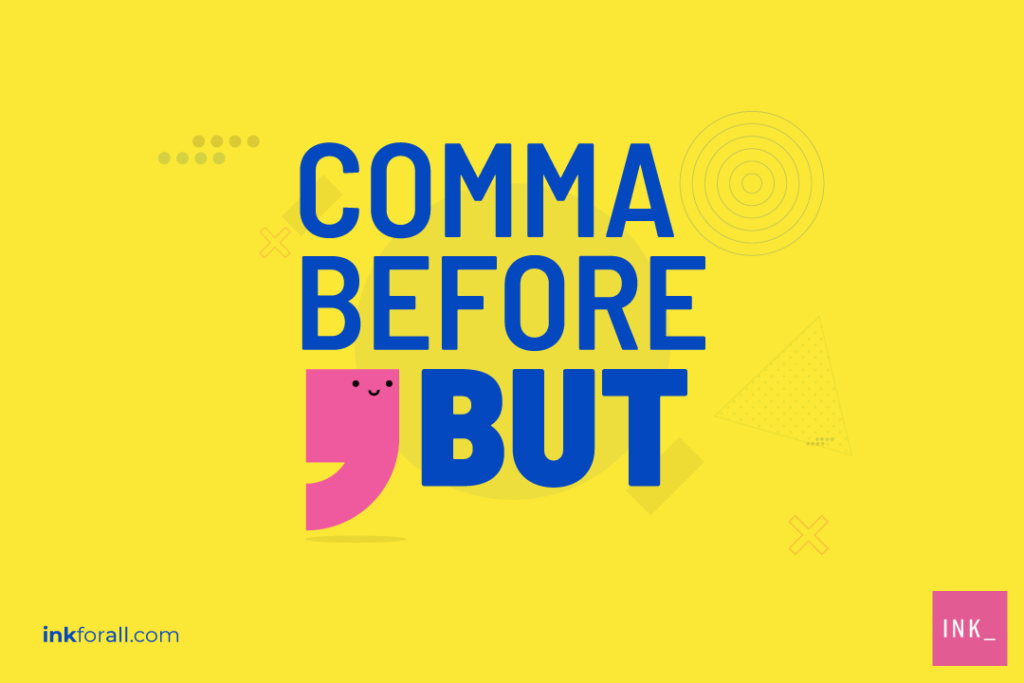

Defining an Independent Clause
In this example, “Lisa loved dogs” is an independent clause. It contains a subject and a verb and conveys a complete thought. “She knew the names of every four-legged resident of her neighborhood” is also an independent clause for the same reason.
Exploring Sentences Containing Two Independent Clauses
Sentences may contain two independent clauses as long as they’re punctuated properly. Without correct punctuation, two independent clauses strung together form a run-on sentence.
There are several ways to join two independent clauses in a sentence correctly.
- Separating them with a semicolon.
- Joining them through a conjunction such as or, but, or and.
Examples:
There are several ways to join these two clauses.
This is a comma splice. It’s grammatically incorrect.
In this example, a semicolon effectively connects these two related independent clauses.
This example shows but as a conjunction between these two independent clauses. A comma is required here.
Where to Place the Comma
If you’re connecting independent clauses with a semicolon, you don’t need a comma. If you’re joining two independent clauses with a conjunction, such as but, a comma is required. The comma belongs after the last word in the initial clause, before but (or whichever conjunction you’ve used).
In this example, “commasare important” and “they can be difficult to use” are both independent clauses. They can stand on their own as sentences.
When you Shouldn’t use a Comma Before But
The rule of thumb here is simple: unless but joins two independent clauses, you don’t need a comma. In some sentences, independent clauses are joined to dependent clauses. A comma is not required in these instances.
1. Defining a Dependent Clause
Although a dependent clause contains a subject and verb, it can’t stand alone as a sentence because it doesn’t express a complete thought. These phrases can function as nouns, adjectives, or adverbs.
Word markers often signal dependent clauses. These may include:
- after
- although
- unless
- when
- whether
- since
- as if
- in order to
- whatever
2. Punctuating Sentences That Have Dependent Clauses
If the but in your sentence joins dependent and independent clauses, no comma is necessary.
In this example, “still didn’t get a response” is a dependent clause. It can’t stand alone as a sentence. No comma is needed before the but here.
Other Exceptions
Occasionally, you’ll encounter a joining of two short independent clauses. If the clauses are simple and demonstrate an obvious connection, then no comma is necessary. Although it isn’t grammatically incorrect to use a comma in this instance, it can create a sentence with poor flow. Take for instance the examples below:
The Flip Side: When to Put a Comma After But
The answer: rarely.
Interrupters may also be called insertions or parenthetical expressions.
In this example, “of course” serves as an interrupter, so a comma is required after the but. This example also includes a comma beforebut since it’s joining two independent clauses.
Commas, Commas, Everywhere: A Brief Conclusion
Grammar rules, including but not limited to commas, can be challenging at best and downright impossible to understand at worst. By exploring individual questions such as when to place a comma beforebut, you’ll learn how to use this grammatical go-to in no time. No buts about it.
Quick Grammar Quiz About Comma Before But
Comma Before But Question #1
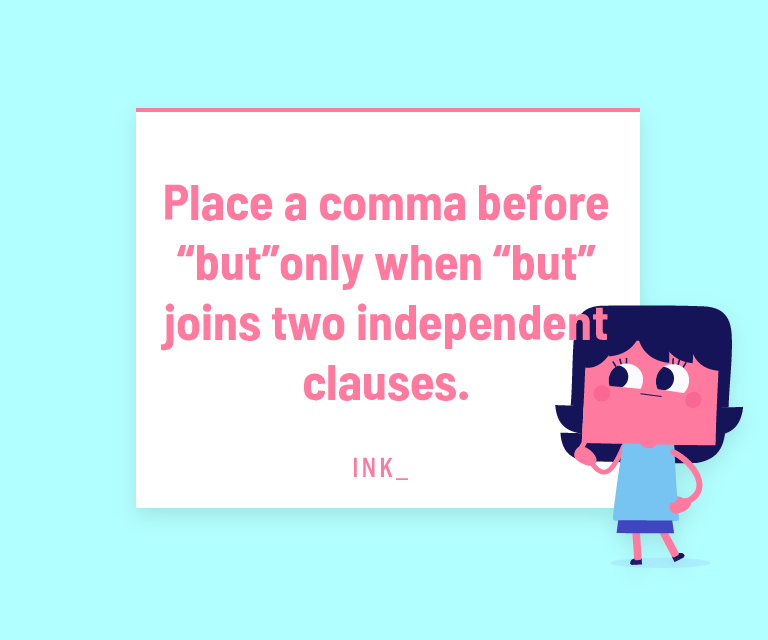

The answer is TRUE. The comma shows where one clause ends and the other begins.
But Comma Question #2
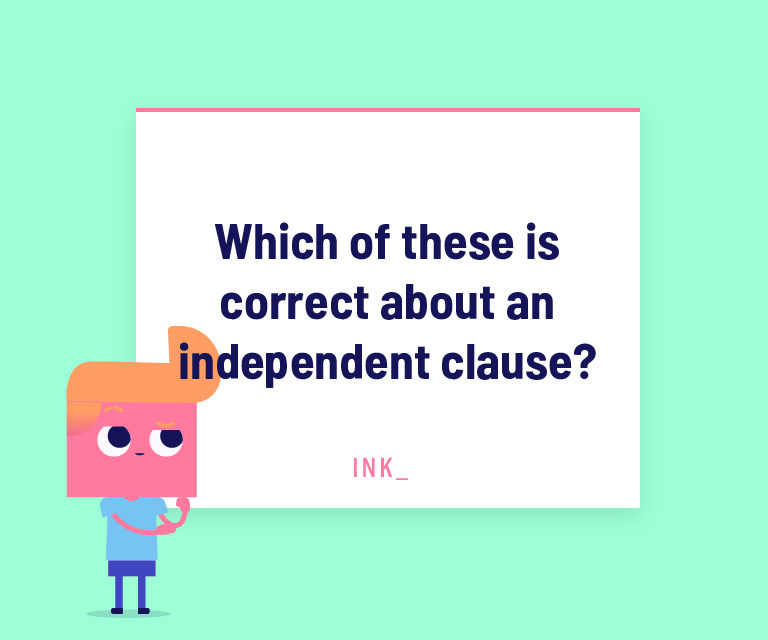

The answer is D. An independent clause contains a subject and a verb, expresses a complete thought, and can stand alone as a sentence.
Comma Before But Question #3
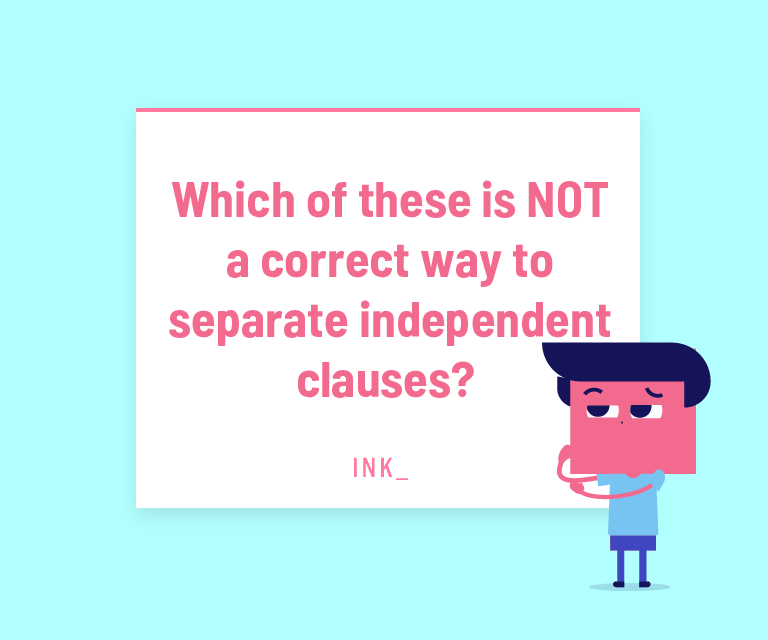

The answer is A. This sentence is a comma splice.
Comma Question #4


The answer is B. You only need a comma when joining two independent clauses with a conjunction.
Comma Before But Question #5
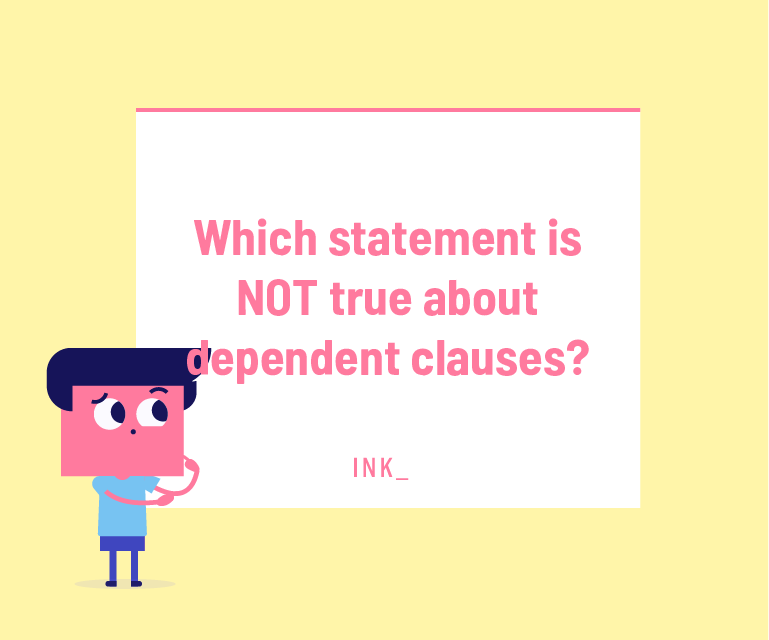

The answer is B. Since dependent clauses don't convey a complete thought, they can't stand alone in a sentence.
Comma After But Question #6
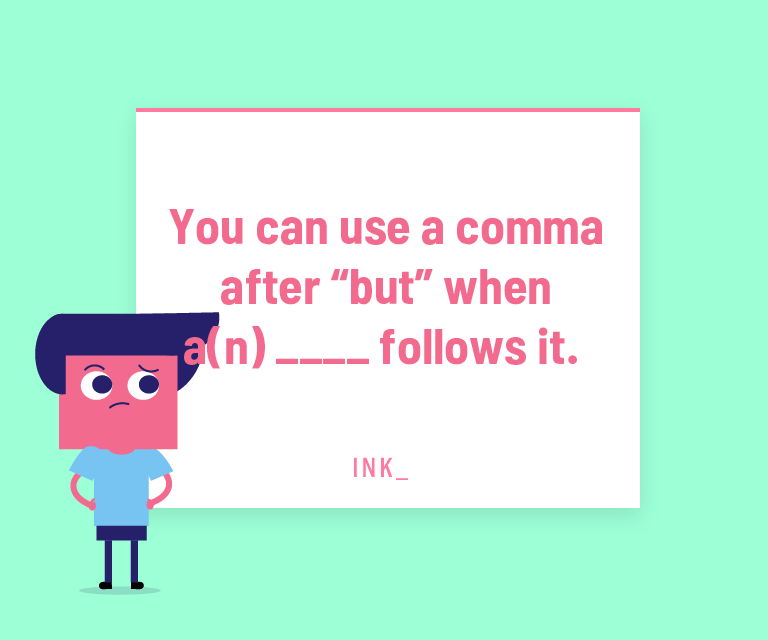

The answer is D. An interrupter is a literary device that's intended to enhance style. It's also known as an insertion or a parenthetical expression.

Comments (0)
Most Recent